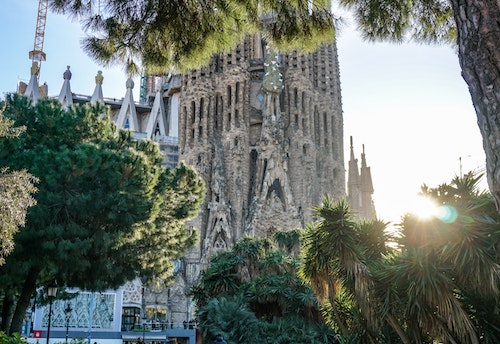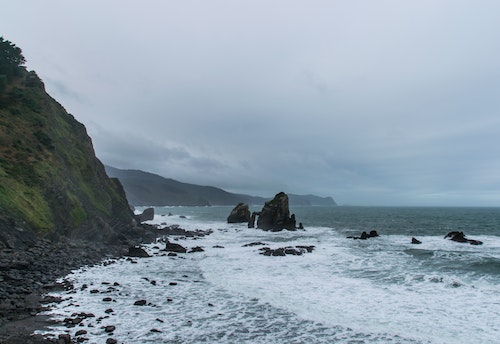Beyond Spanish: The (Other) Official Languages of Spain

You might be forgiven for thinking that everyone in Spain speaks the same language. After all, the country has one preeminent language, Spanish: the language of Pedro Almodóvar, Lola Flores, and pop singers like Enrique Iglesias. However, dig a little deeper and you’ll find that there are a number of other languages spoken throughout the country. In fact, some of them have made it to popular streaming platforms such as Netflix, with the Catalan TV show Merlí being one of the most popular searches worldwide.
→Find a Native Tutor Now!←
According to Ethnologue, the official languages of Spain include not only Spanish but also Catalan, Valencian, Galician, and Basque. In this article, we’ll take a look at each of them, and we’ll tell you everything you need to know about their distribution, history, and current state.
Catalan
Catalan is a Romance language like Spanish, and it’s spoken primarily in the northeastern region of Spain known as Catalonia. Ethnologue reports that there are around 10 million Catalan speakers in Spain, the vast majority of whom live in Catalonia. Barcelona, which is one of Spain’s most important cities and a must-see stop for tourists, is the capital of the Catalan-speaking region.
History of the Catalan Language
The origins of the language can be traced back to the 11th century, when the Counts of Barcelona began to unify the various Catalan counties under their rule. In the 14th century, the Principality of Catalonia became a part of the Crown of Aragon, and Catalan began to lose ground to Spanish, which was the language of the court.

In the 17th century, the use of Catalan was suppressed by the Spanish government in an effort to stamp out Catalan nationalism. This policy continued well into the 20th century, and it wasn’t until the death of dictator Francisco Franco in 1975 that Catalan began to be promoted and taught in schools once again.
The Catalan Language Today
Today, Catalan is enjoying a resurgence, and it’s estimated that there are around 7 million Catalan speakers worldwide. Besides being consistently spoken in Spain, there are also significant numbers of Catalan speakers in the French region of Pyrénées-Orientales and the Italian island of Sardinia.
If you’re interested in exploring Catalan culture and the beautiful sounds of the Catalan language, you can watch the TV show Merlí, which follows the life of a philosophy teacher and his students in Barcelona.
Valencian
Valencian is the official name for the language spoken in the Valencian Community, which is located on the southeastern coast of Spain. As of 2022, there are around 2 million Valencian speakers in Spain. The city of Valencia, which is famous for its paella and its annual Fallas festival, is the capital of the Valencian-speaking region.
Valencian: Language or Dialect?
Valencian is a variety of Catalan, and the two languages are mutually intelligible. However, the Valencian Academy of the Language, which is the official institution responsible for regulating the use of the language, considers that there are enough differences between the two to state that Valencian is a separate language.

The first written records of Valencian date back to the 13th century, while the first grammar book was published in the 15th century, which regulated and encouraged the use of the language for the next five centuries.
The Valencian Statute of Autonomy was finally passed in 1982, after being banned by Franco’s dictatorship in 1975.
Where Can I Find Examples of Spoken Valencian?
If you’re interested in learning more about the Valencian language and the culture of the Valencian Community, you can watch La Vall, a TV series that tells the story of a town on the verge of becoming deserted that offers uninhabited houses to new settlers with the aim of avoiding their disappearance.
And if you’re a music lover, you have to check out the band El Diluvi which combines cumbia, reggae, rumba and folk music to create unique songs written in Valencian.
Galician
Galician is a Romance language spoken in the northwestern region of Spain known as Galicia. There are around 2.7 million Galician speakers in Spain, the vast majority of whom live in Galicia. The capital of the Galician-speaking region (where you will find most Galician speakers) is the city of Santiago de Compostela, a major stop on the Camino de Santiago, which is a popular pilgrimage route.
Galician: A Brief History
Galician was derived from the Vulgar Latin spoken in the ancient Roman province of Gallaecia, which included the territory of present-day Galicia, the north of today’s Portugal, Asturias, the current province of León and part of Zamora.
After the demise of the Western Roman Empire, the different varieties of Latin were consolidated. One of them was medieval Galician-Portuguese.
During the Middle Ages, Galician-Portuguese was, together with Occitan, the usual language of a lyrical genre that was popular throughout the Iberian Peninsula The King of Castile, Alfonso X the Wise, wrote his Cantigas de Santa María in this language.
In the 12th century, when the County of Portugal sought independence from the Kingdom of León, medieval Galician-Portuguese began to diverge into two languages: Galician and Portuguese. Both were fully consolidated by the fourteenth century.
Then, at the end of the 19th century, with the creation of a literary movement known as Rexurdimento, Galician became a literary language thanks to poets like Rosalía de Castro, Eduardo Pondal, or Valentín Lamas Carvajal.
As with all other regional Spanish languages, the use of Galician was repressed during Franco’s rule, but in 1978 it was recognized as one of the official languages of Spain by the Spanish Constitution in 1981.
Galician Today
Today, it’s estimated that there are around 2.7 million Galician speakers in the regions of Galicia, Castilla y León, Extremadura and Asturias, as well as in the Brazilian state of Rio Grande do Sul.
If you want to hear the Galician language without leaving your house, you can listen to the music of Dios ke te creu, a band from the city of A Coruña. Some of their most popular songs are Tesouro, Días de luz and Ladra de Galicia.
Basque
Basque, also known as Euskera, is the language of the Basque Country, an autonomous community in the north of Spain. It’s the only non-Indo-European language spoken on the European continent.
The Obscure Origins of the Basque Language
An ancient language whose origin, today, is still unknown, Basque is believed by some linguists and historians to be the direct heir to the language spoken 15,000 years ago by the inhabitants of the caves of Altamira, Ekain or Lascaux.

Various researchers also affirm the existence of links between Euskara, Iberian, Berber and some languages of the Caucasus, but the mystery of its exact roots remains unsolved.
What we do know is that Euskara was once spoken in a territory that stretched from the Ebro to the Garonne, from the western Pyrenees to Catalonia, and that this territory was gradually reduced due to the invasions of Indo-European peoples such as the Celts and the Romans
Since the 19th century, Euskara has lost half of its area of influence. However, numerous vestiges of the language remain in the names of rivers, mountains, towns and buildings which date back to ancient times.
The Survival of the Basque Language
Despite the vicissitudes suffered throughout its history, the Basque language is still alive in the autonomous region of Spain known as the Basque Country, where it has enjoyed official status since 1979.
In Navarra, another autonomous region of Spain, Basque was made official a few years later, in 1982. In the Northern Basque Country (France), despite the campaigns for the officialization of Euskara, the language has not yet managed to be recognized as such by the French administration.
If you want to familiarize yourself with the sounds of the Basque language, you can start with the movie Handia, directed by the acclaimed Basque filmmaker Aitor Arregi. The story, set in the 18th century, revolves around the construction of the tallest statue in the world at that time, and it is one of the most important films spoken in Euskara.
Learning about the official languages of Spain is a great way to get to know the country’s culture and diversity.
These languages are the result of the historical, geographical and cultural evolution of Spain, and learning the basics of each of them will result in a much more meaningful experience should you decide to travel around Spain.
→Find a Native Tutor Now!←
At Lovlan, we have a comprehensive directory of native tutors not only of Spanish but also of other official languages of Spain. All you have to do is enter the language you want to learn on our homepage and you will be redirected to a full list of available language instructors so you can pick your own based on your availability and learning preferences.
What are you waiting for? Choose the best tutor for you and start your language-learning journey today. With Lovlan, you can take your class at home or in the office during your lunch break or at the end of your shift, so there’s no excuse to keep putting off your dream of learning a new language!


